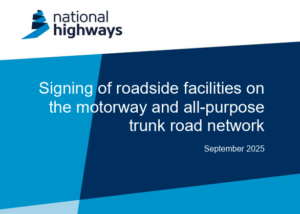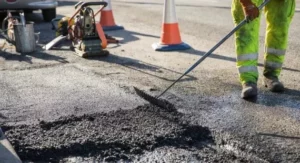Highways England has installed new roadside weather stations on its network to help support it make decisions on winter service delivery.
The stations gives live updates on conditions to help maintenance teams decide when to send up to 535 gritters out onto the network, as well as understanding the risks of surface water or high winds causing disruption.
The weather stations also help the Met Office provide precise forecasting information for England’s biggest roads and more than 50 have been replaced at key locations since 2015. Another nine are being installed this winter, including at one of England’s highest motorway points on the M6 at Shap in Cumbria.
Katy Little, Highways England’s winter services project manager, said: “We’ve been updating our weather stations with the latest technology to make sure the data we’re getting is as accurate as possible, and to help us make decisions which will keep the roads moving in the winter months.
“The updates from our weather stations also feed into the Met Office’s national system, which means our roadside sensors are helping to produce the weather forecast you check at the start of each day.
“It’s important that drivers who must travel in wintery conditions leave extra time for their journeys and make sure they and their vehicle are prepared. Drivers should carry out vehicle checks and pack essential items such as warm clothes and an ice scraper before setting out.”
The weather stations use sensors mounted to metal poles at the side of the road to provide statistics on air temperature, precipitation, humidity, wind speed and visibility. The poles are fitted with hinges which means they can be easily lowered for maintenance without needing to close the road.
Sensors in the road surface and 30 centimetres underground also provide temperature readings as well as accurately measuring the depth of water or snow on the carriageway. And two CCTV cameras provide live images of the road in both directions.
Highways England has over 250 weather stations located across its 4,400 miles of motorways and major A roads, and 1,300 specially-trained gritter drivers are ready to work around the clock when wintry weather is forecast. Overhead warning signs can also be used to inform motorists of severe weather.
The information from weather stations helps Highways England plan for all eventualities. This winter the lower traffic levels experienced due to national lockdown restrictions mean gritting services are being adapted to keep drivers safe, with additional salt being spread.
Abi Oakes, Senior Account Manager, Transport, at the Met Office, said: “Good quality, reliable weather observations are the foundation of any forecast. They allow weather forecast models to reflect the on-the-ground situation, helping to give an accurate starting point for the forecasting process. They also allow us to verify our forecasts and to keep ahead of any changes.”





















